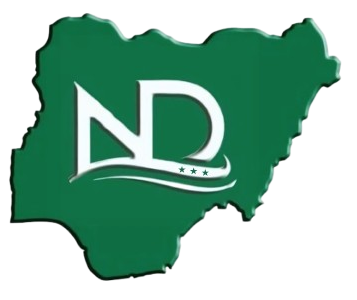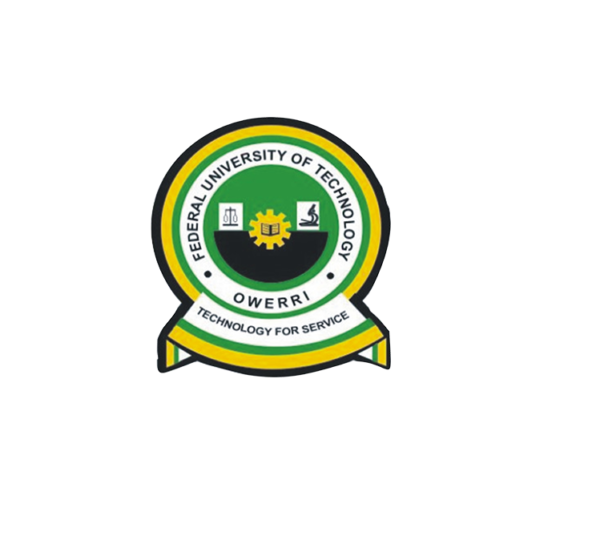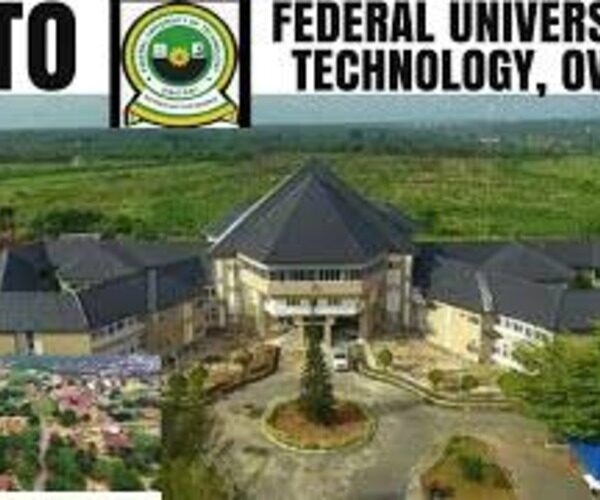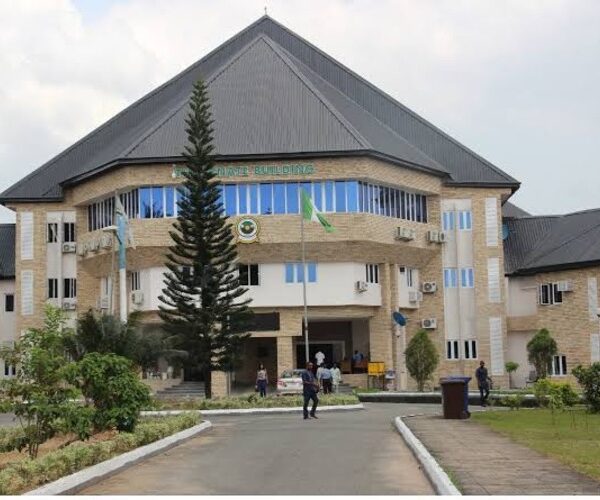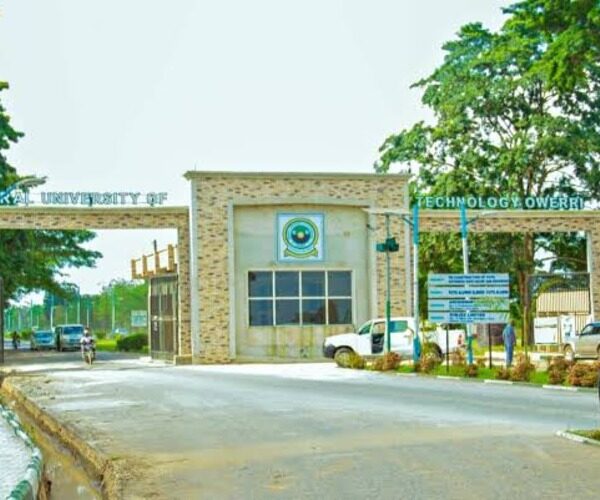- Education
- Ihiagwa, Imo, Nigeria
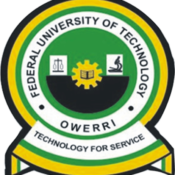
FEDERAL UNIVERSITY OF TECHNOLOGY OWERRI
FUTO’s History
FUTO, the oldest University of Technology in Nigeria, was established in 1980 by Executive fiat with the composition and appointment of the first provisional Council by Nigeria’s First Executive President, Shehu Shagari. It became the first of three such Universities set up by the Federal Government of Nigeria who sought to establish a University of Technology in each geo-political region, particularly in a State which did not have a conventional University.
On November 28, 1980, on the premises of the Old Government Technical College (GTC), FUTO opened its doors to staff and students.
In January 1982 the Imo State government approved a permanent site for the University. FUTO engaged Messrs Concarplan – Enplan Group (a firm of Consultants) to design the physical plan for the University.
Located 25 kilometers south of Owerri, the selection of the site was guided by the advice of the National Universities Commission that a minimum area of ten thousand (10,000) acres or 4,048 hectares should be obtained based on the location, the relative absence of human settlements within the area and other relevant factors.
FUTO is surrounded by a number of autonomous communities and homesteads all of which had contributed land acquired for the development of the University. These communities are Ihiagwa, Obinze, Umuoma, Nekede, Eziobodo, Avu, Okolochi, Obibiezena, and Emeabiam. It is bisected by a new road between Obinze and Naze which connects the two mentioned major roads. The Otamiri River traverses the site from North to South and with the beautiful vegetation in its river basin forms an important physical feature.
Our Vision
To re-engineer and re-position the Federal University of Technology to be a truly world-class university through recreating, nurturing, and developing uniquely promising students and exceptional staff in science, technology, and enterprise to the benefit of our globalized world.
Our Mission
To operate practical training geared towards transforming the nation’s economy from consumer-oriented to production-oriented, with a sound technological base.
Schools
• School of Agriculture and Agricultural Technology (SAAT)
• School of Engineering and Engineering Technology (SEET)
• School of Electrical Systems and Engineering Technology (SESET)
• School of Physical Sciences (SOPS)
• School of Biological Sciences (SOBS)
• School of Logistics and Innovation Technology (SLIT)
• School of Health Technology (SOHT)
• School of Environmental Sciences (SOES)
• School of Basic Medical Sciences (SBMS)
• School of Information and Communication Technology (SICT)
• College of Medicine and Health Sciences (CMHS)
Institutes and Academic Support Centers
• Centre for Agricultural Research (CAR)
• Centre for Continuing Education (CCE)
• Centre for Entrepreneurial and Vocational Studies
• Centre for Industrial Studies (CIS)
• Centre for Energy and Power Systems Research (CEPSR)
• Centre for Research and International Development (CRID)
• Centre for Women, Gender and Development Studies
• Information and Communication Technology (ICT) Centre
• Institute of Erosion Studies (IES)
• University Computer Centre (UCC)
• Intellectual Property and Technology Transfer Office (IPTTO)
• Institute of Environmental Health and Environmental Justice (IEHEJ)
University Library
Federal University of Technology Owerri Library
The University Library serves as the pivot of academic pursuit. It was opened to students at the Lake Nwaebere campus on 9 November 1981. The pioneer librarian was Mr Joseph Chike Anafulu. The library has three main blocks: Library Phases II & IV and the E-library.
Programmes and Courses
School of Agriculture And Agricultural Technology (SAAT)
1. Agricultural Economics
2. Agricultural Extension
3. Animal Science and Technology
4. Crop Science and Technology
5. Fisheries and Aquaculture Technology
6. Forestry and Wildlife Technology
7. Soil Science and Technology
School of Health Technology (SOHT)
1. Biomedical Technology
2. Dental Technology
3. Environmental Health Science
4. Optometry
5. Prosthetics and Orthotics
6. Public Health Technology
School of Basic Medical Science (SBMS)
1. School of Basic Medical Science
School of Information and Communication Technology (SICT)
1. Computer Science
2. Cyber Security
3. Information Technology
4. Software Engineering
School of Biological Science (SOBS)
1. Biochemistry
2. Biology
3. Biotechnology
4. Microbiology
5. Forensic Science
School of Management Technology (SMAT)
1. Financial Management Technology
2. Management Technology
3. Maritime Management Technology
4. Project Management Technology
5. Transport Management Technology
School of Engineering and Engineering Technology (SEET)
1. Agricultural and Bioresource Engineering
2. Chemical Engineering
3. Civil Engineering
4. Electrical and Electronics Engineering
5. Food Science and technology
6. Material and Metallurgical Engineering
7. Mechanical Engineering
8. Mechatronic Engineering
9. Petroleum Engineering
10. Polymer and Textile Engineering
School of Physical Science (SOPS)
1. Chemistry
2. Geology
3. Mathematics
4. Physics
5. Science, Laboratory Technology
6. Statistics
School of Electrical Systems and Engineering Technology (SESET)
1. School of Electrical Systems Engineering Technology (SESET)
School of Environmental Science (SOES)
1. Architecture
2. Building Technology
3. Environmental Technology
4. Quantity Surveying
5. Surveying and Geoinformatics
6. Urban and Regional Planning School of Postgraduate Studies (SPGS)
• PG School
Directorate of General Studies
• General Studies
Business Amenities
- Car Parking
- Funding: Federal
Tags
Contact Information
Opening Hours
Contact Business
Contact Business
Additional Information
Additional info


